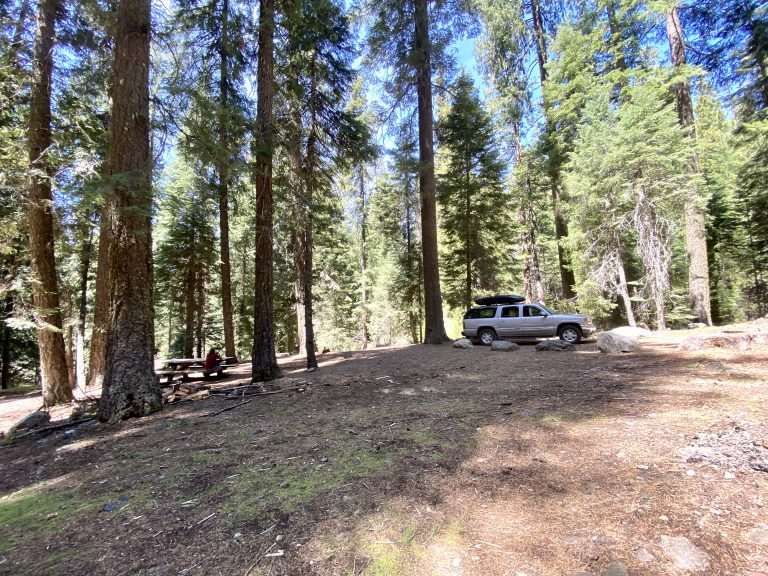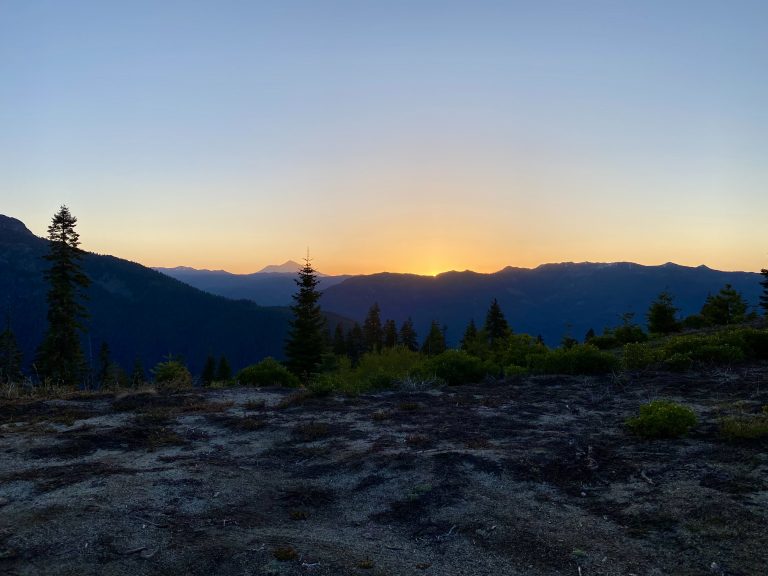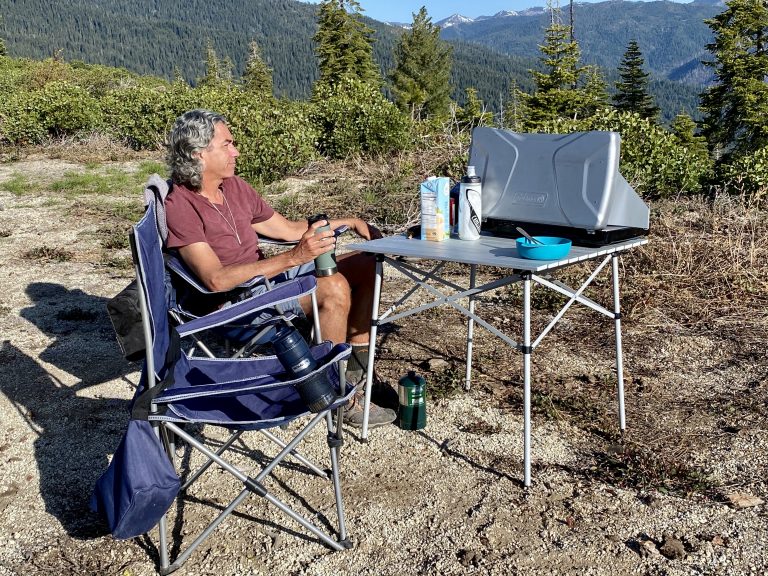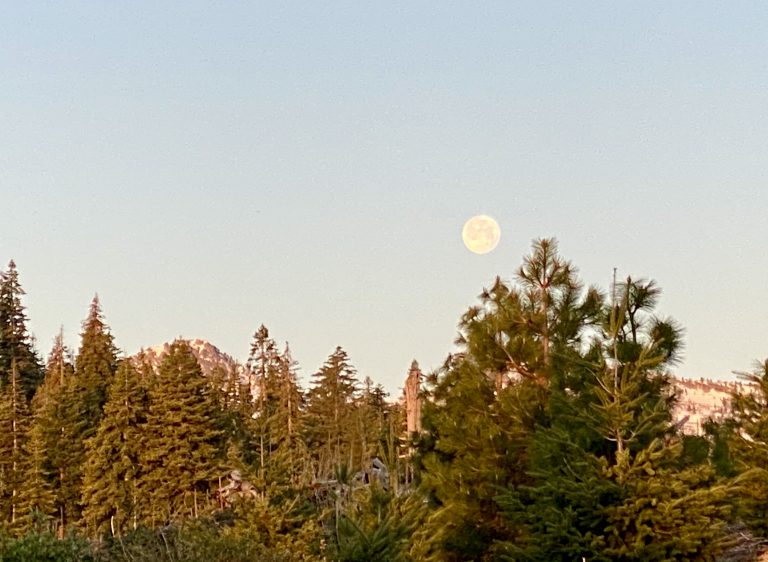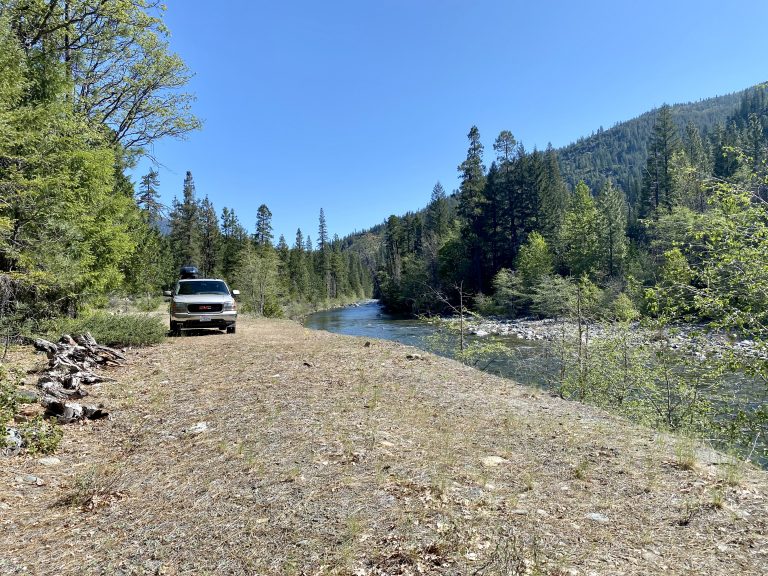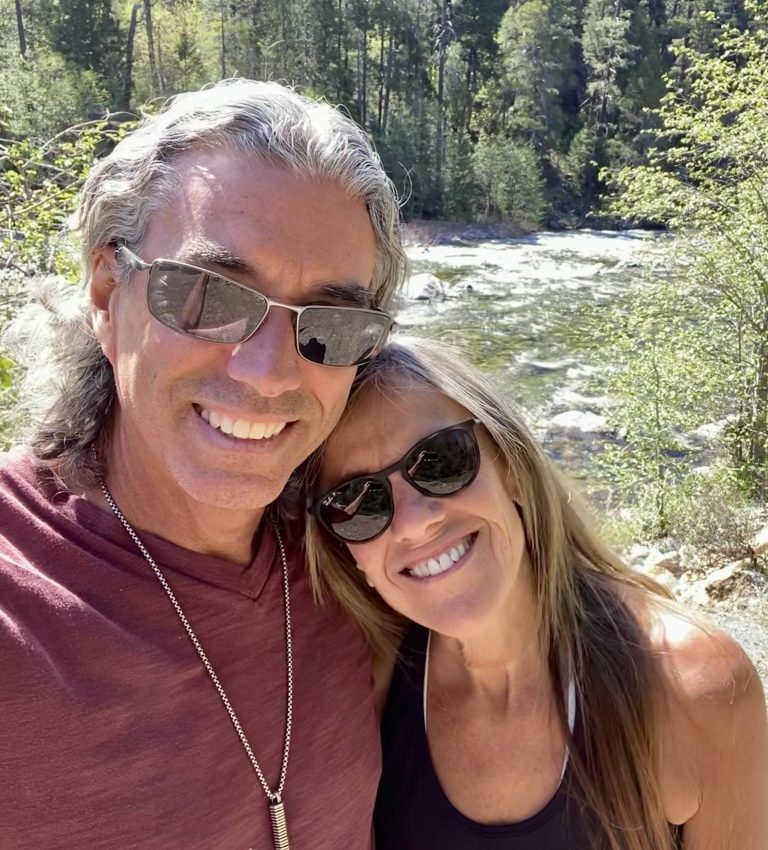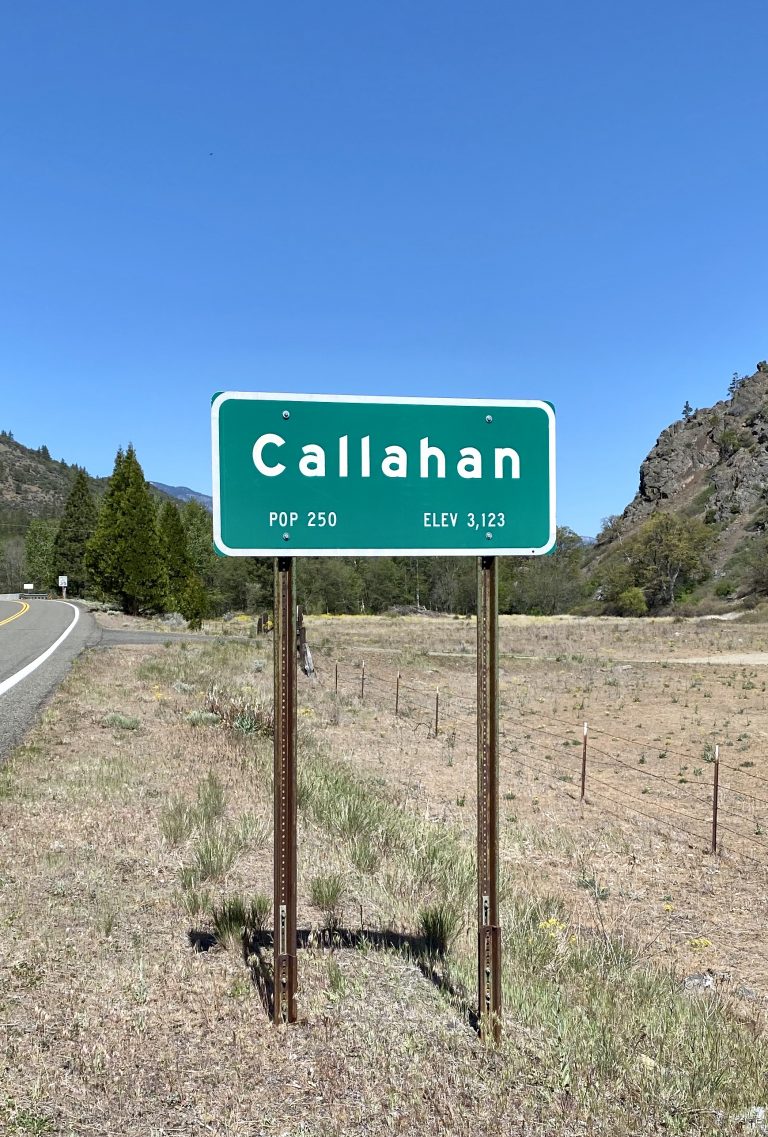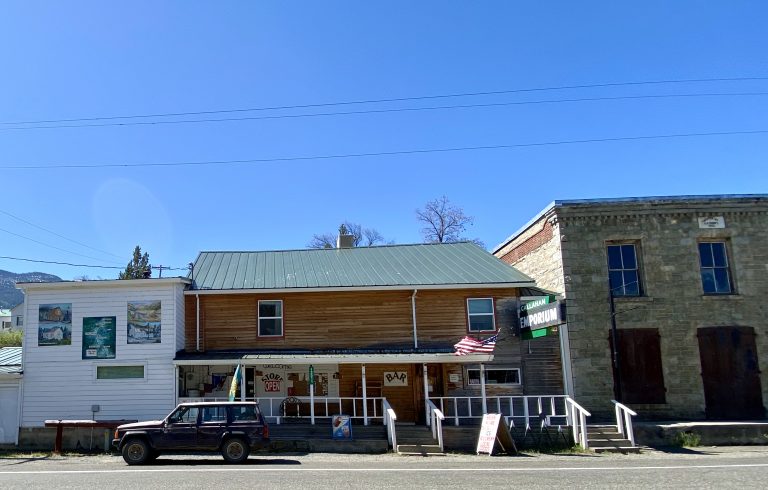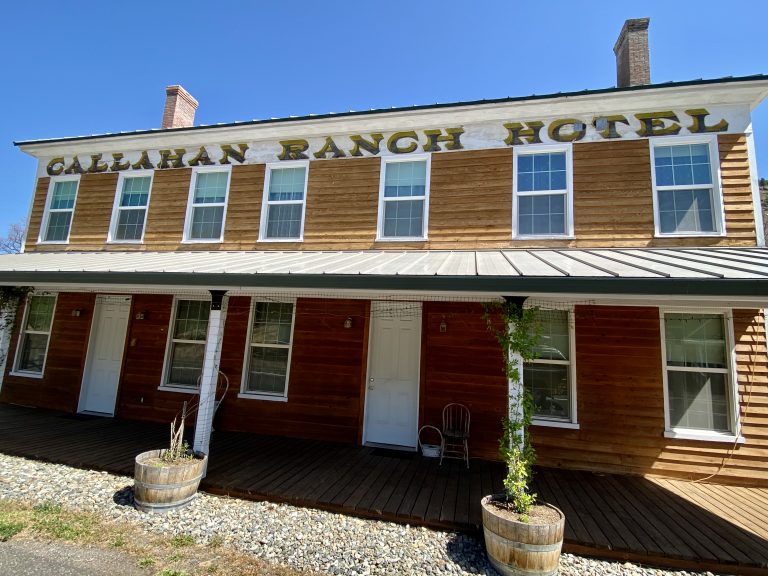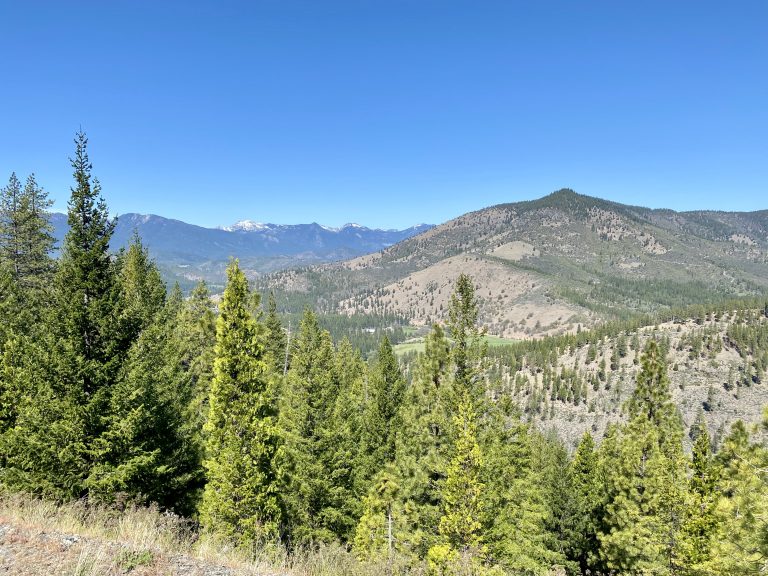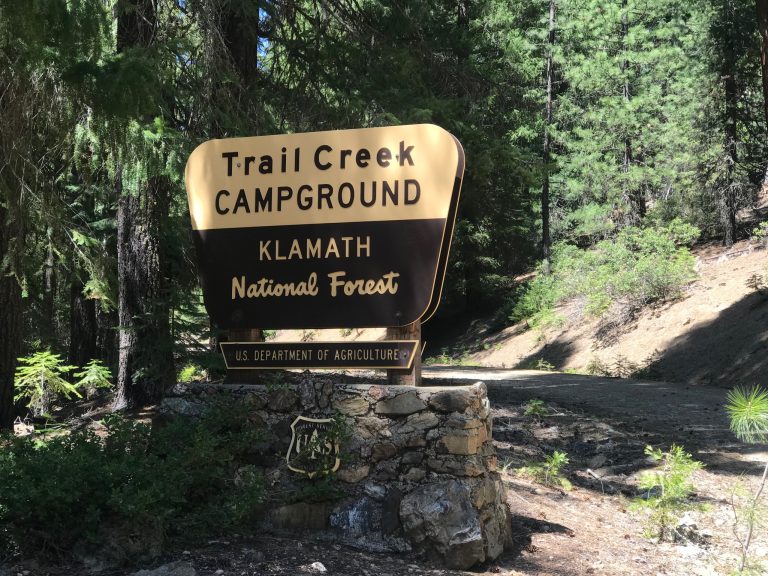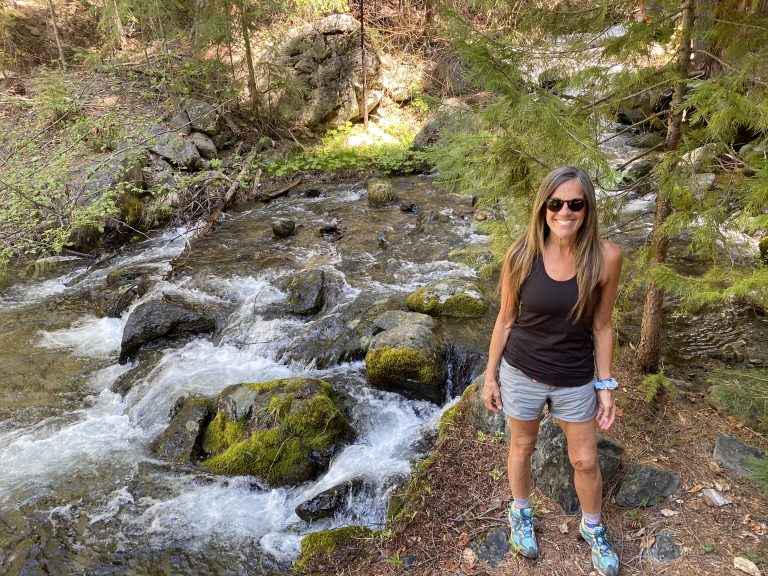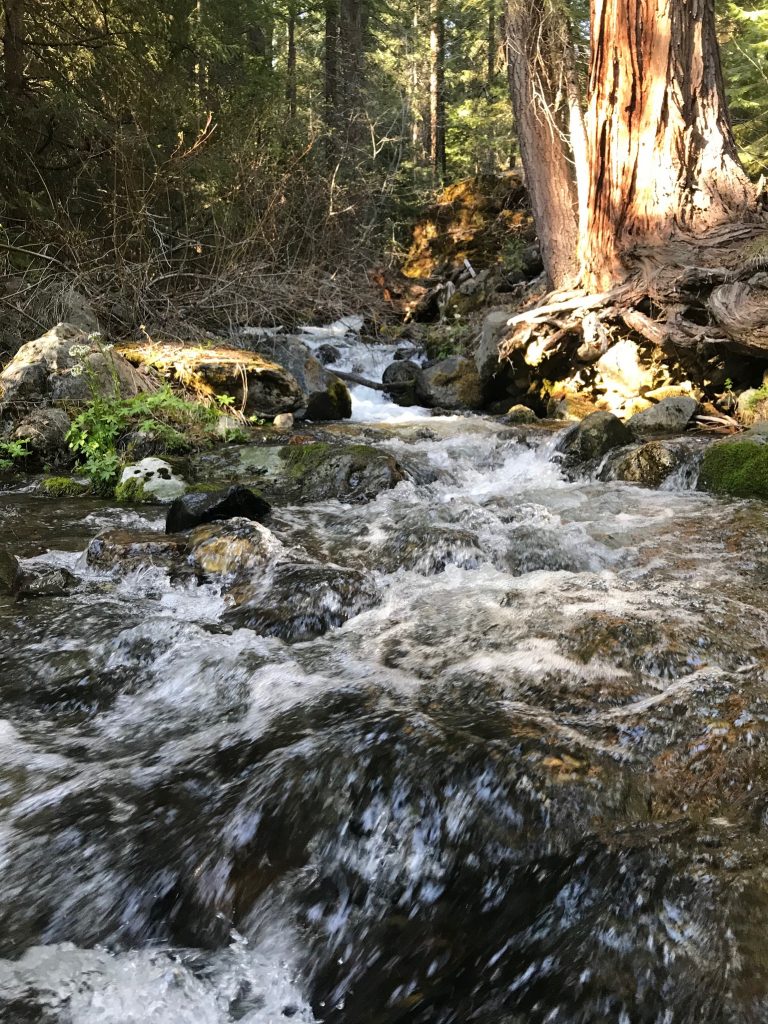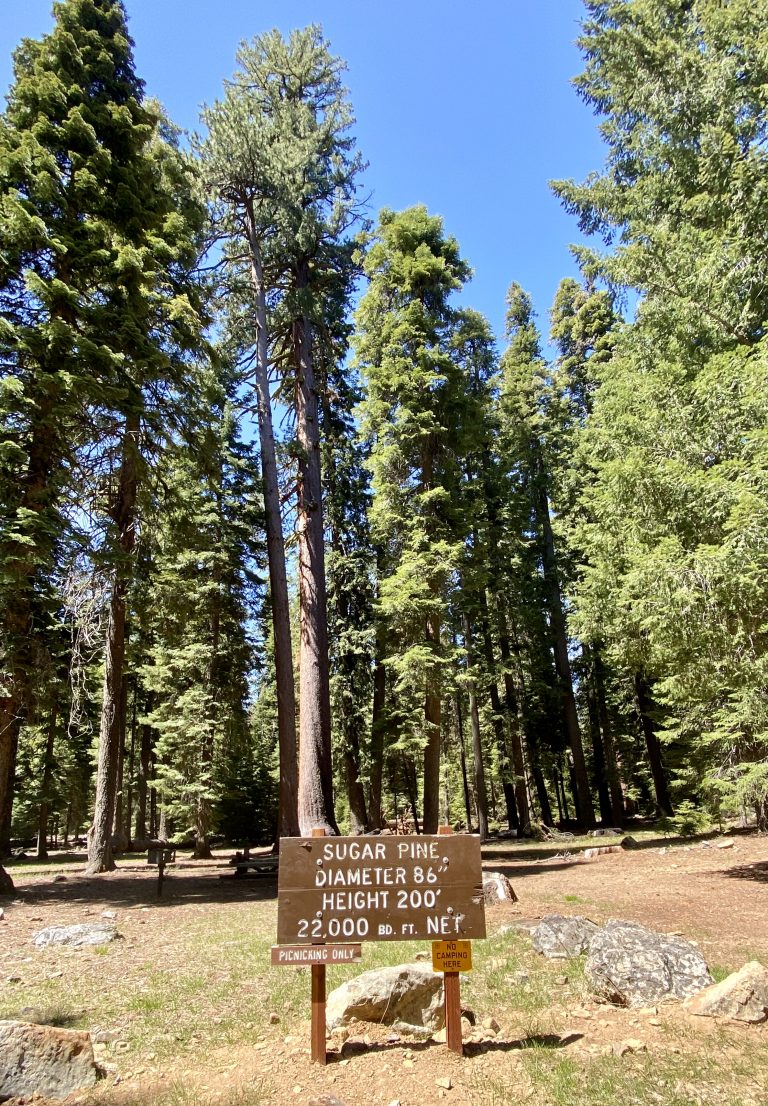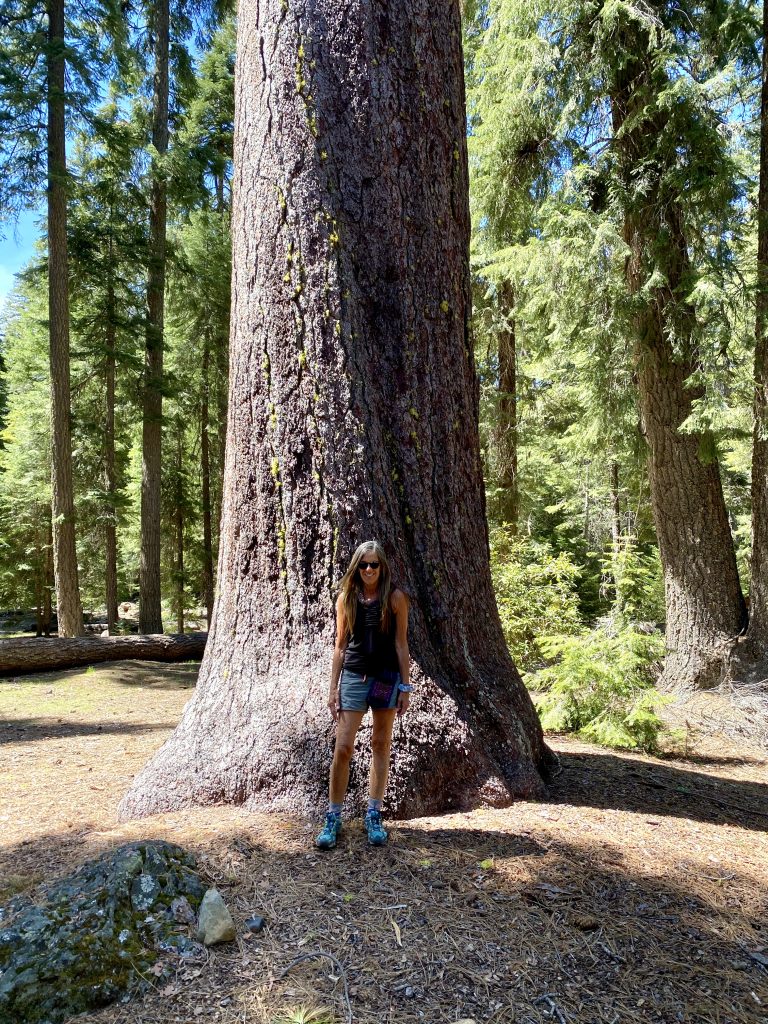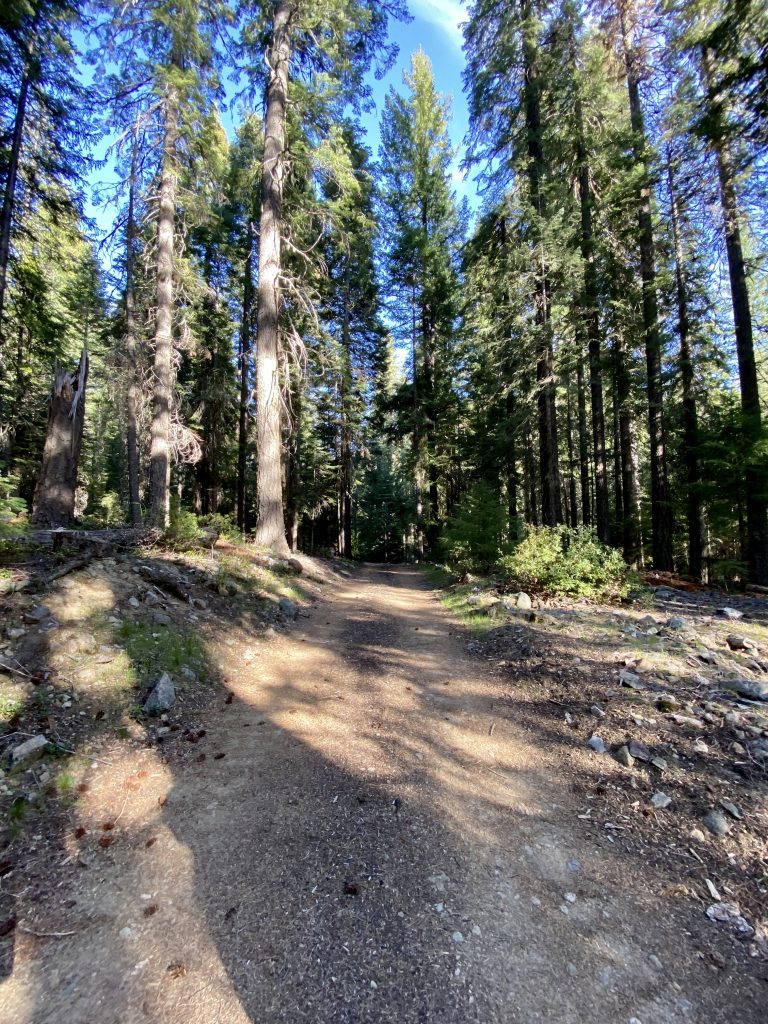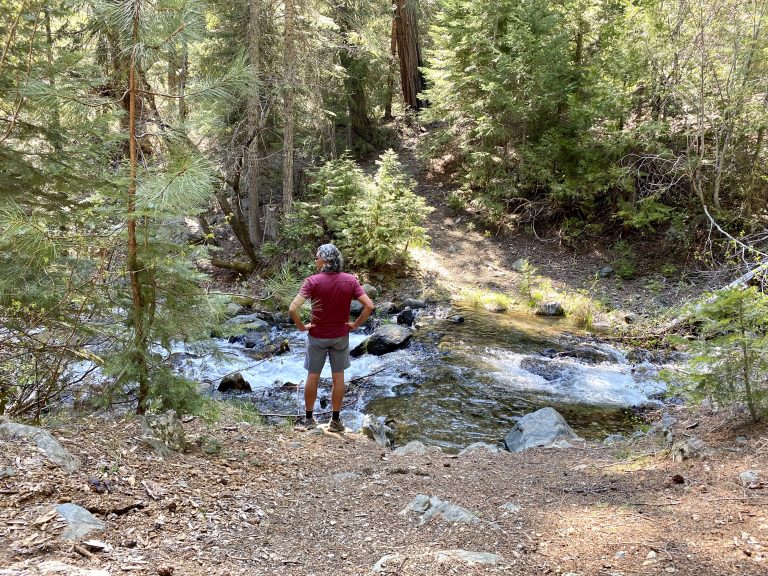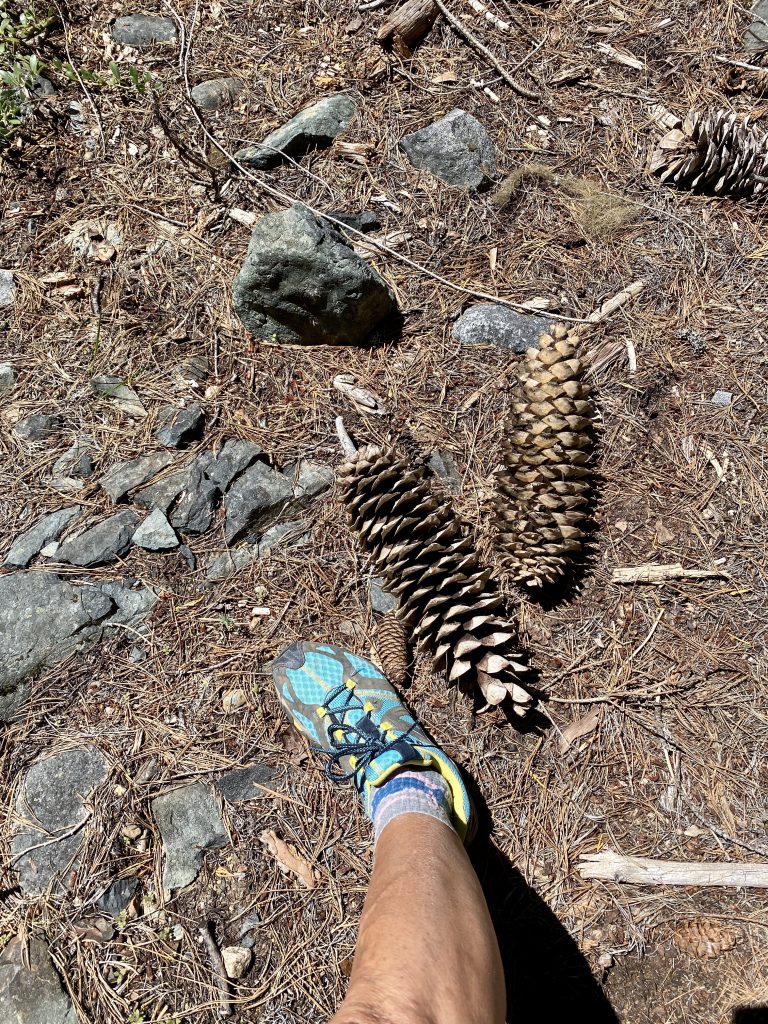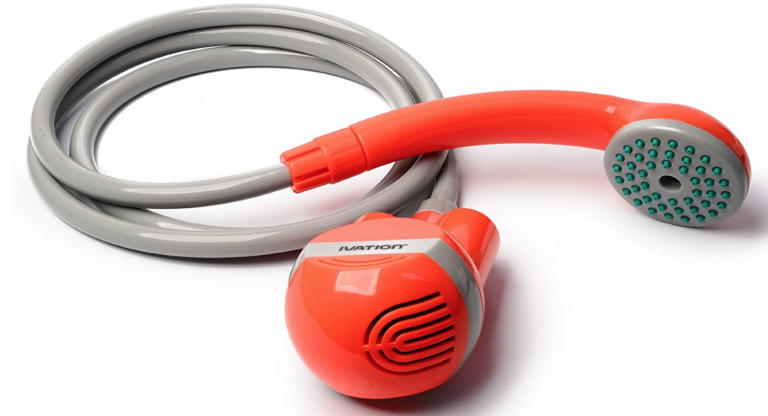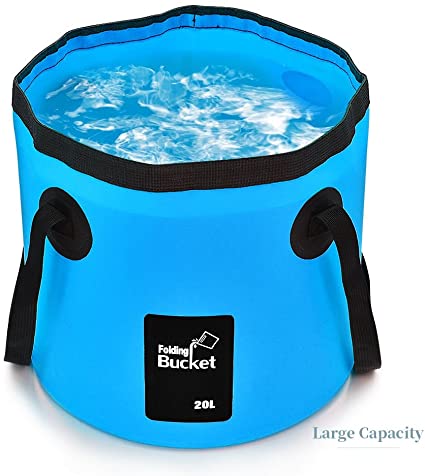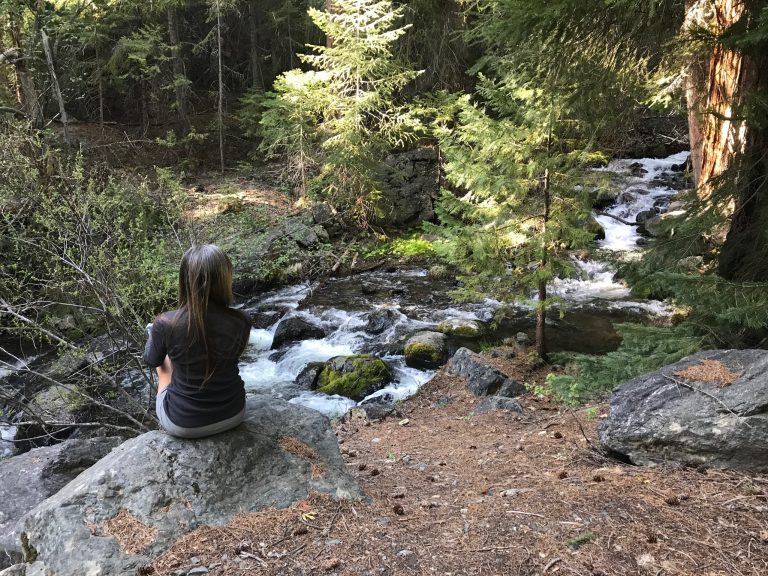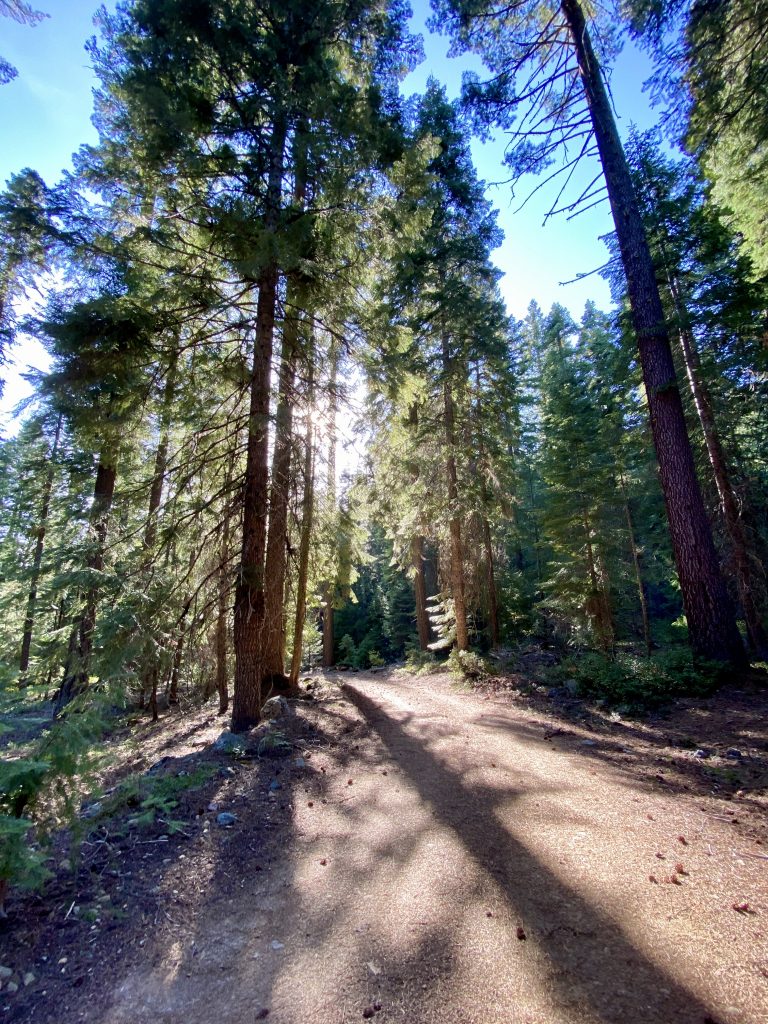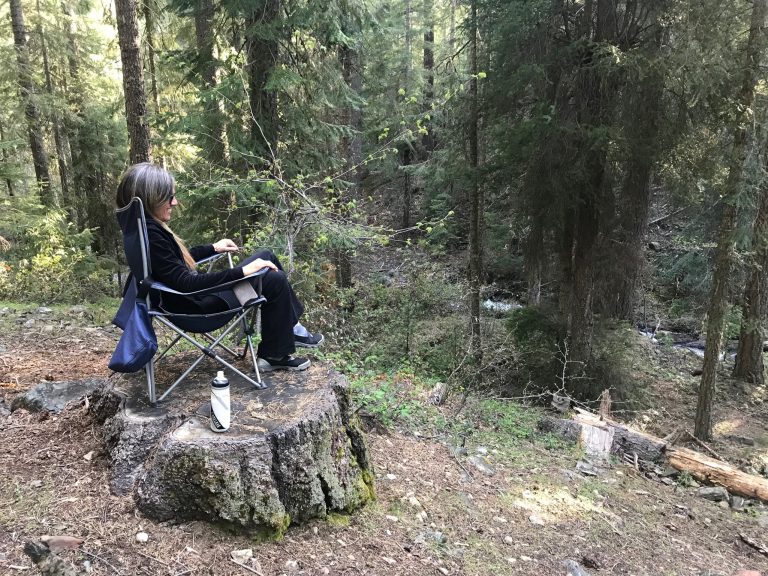May 8, 2020
We woke up early and when we stepped out of the truck we were surprised that it wasn’t as cold as we expected. Clearly the heat wave in the valley affected higher elevations too.
Susan snapped a photo as the sun began to rise over the mountains. Soon, the sun was climbing into the blue sky and warming the truck into the upper 50’s. I didn’t even need a jacket.
We made coffee and oatmeal at the campsite and luxuriated in the near 360-degree view of mountains, some snowcapped, reflecting the morning light. The full moon had not yet set, adding to the beauty.
Packing up was quick and easy as always and we headed back down the hour-long dirt roads, rumbling along in first gear. We turned north onto CA Hwy 3, which followed the beautiful Trinity River as it wound through the hills. Traffic was almost nonexistent. We stopped for a walk along the river.
I’m constantly amazed at the quality of California roads, at least in the northern part, especially because of how little traffic there often is. We saw only one car for 40 miles. We climbed to 6,000 feet, close to the snow line and then descended.
I needed a restroom break and all of the National Forest picnic areas and campgrounds we’d passed so far were closed with locked gates due to the coronavirus. On a whim, I turned off into Trail Creek Campground just off the highway and found that there was no gate to close it, so we drove in. After finding the bathroom (it was locked), we realized that we’d found a unicorn. We’d arrived at a fabulously beautiful campground set along a rushing creek – with every single campsite unoccupied.
We drove to the end of the campground road and found what may be the best National Forest campsite in existence. It was huge, maybe a quarter of an acre or more, with giant old growth trees all around. It was separated from all the other campsites and was the only one with direct access to frigid cold Trail Creek. Someone had even left a large pile of firewood.
Our initial intention for the day had been to head over the mountains to the Pacific Ocean (we knew we were too early in the season for more Trinity Alps hikes), but once we found the campground and realized that we’d probably never be able to duplicate the experience, we instantly agreed we needed to stay put. There were no signs saying the campground was closed and we hadn’t seen a soul on the road for hours, so we decided to take our chances, leveled the truck with a couple of rocks, and set up camp.
The creek itself was another perfection as it tumbled out of the mountains, noisily rushing past the campground with astoundingly cold clear water. We walked through the campground and agreed that even at full capacity, it would be worth a stop. But it was completely empty and the road we came in on had such little traffic, we never heard a single car.
After a quick lunch, we decided to hike out of the campground along a Forest Service dirt road that my GPS map showed would loop over a bridge and back around to our campsite after a couple of miles, though it wasn’t clear how it would cross back over the creek again. The road was obviously seldom-traveled and eventually, we turned onto another even less-traveled dirt road. It was a beautiful walk along a thick forest, always with the sound of Trail Creek within earshot. We climbed over lots of dead-falls, some very recent from spring storms, and finally came to the end of the road. The sun shining on the deadfalls along with decades of fallen pine needles gave the place a wonderful intense pine scent that lingered. The road opened up into a clearing that looked like it had been used as a lumbering operation, long since abandoned. Following a dim trail to the creek, we realized there was no way to cross it back to our campsite and it was not even the same creek. The GPS was wrong. Undaunted, we turned around and hiked back the way we came, a total of five miles.
Sticky from two days of hiking, back at the campsite we tried out something new we’d gotten on Amazon: a collapsible five-gallon bucket and a rechargeable shower head/pump that sucked water from the bucket. I’d filled the bucket before we left on the hike and let it sit in the sun, hoping it would be warmer than the frigid creek. The air was a pleasant 70 and the sun shone between the trees. We stripped down near the truck and whooped and hollered as the still-cold water hit us from the shower. But we soaped up with biodegradable Dr. Bronner’s soap, scrubbed and then hollered some more as we rinsed with water that was only a little warmer than the creek.
Afterwards, we felt transformed. A shower in the wilds is exquisite – if you can take it. So is a beer. We’d brought a couple with us, and once we dried off and dressed, we sat in our folding chairs in the filtered sunlight and enjoyed them.
Later, we went back down to the rushing creek, climbed onto the boulders and sat for a while, mesmerized by the sound and the view.
We then cooked dinner and went for an early evening stroll around the campground. When we returned, Susan changed into long pants, put on a jacket, and perched her chair near the creek on an enormous flat tree stump, looking to all the world like a queen upon her throne. The experience, the solitude, the setting, the creek – were all a couple of degrees greater than we’d experienced before and we kept commenting how lucky we were to find the temporarily abandoned campground.
We still had enough food and water for a couple more days and as we prepared the truck for sleeping, we discussed our choices for the next day, which were many. This part of Northern California is full of forest and mountains and creeks and rivers and good roads and few people. We’d decide in the morning.

